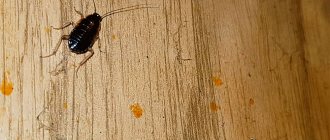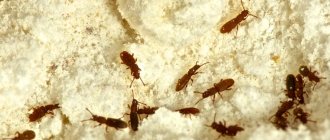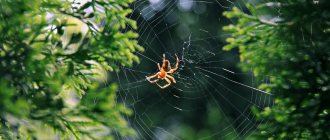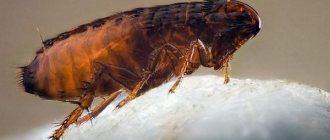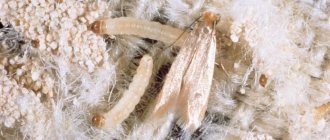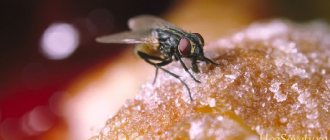In the summer, night “singers” pester not only residents of rural houses, but even city dwellers living on the first five floors. Stores sell many different mosquito traps for outdoor or indoor use. Most of them have rather difficult conditions of use or high prices. A homemade mosquito trap may not have these disadvantages, since most often it is made from scrap materials. Such homemade products are based on the biological characteristics of insects: the desire to find a source of carbon dioxide and night flights aimed at the Moon. The latter is the reason why nocturnal insects “fly towards the light.”
On a note!
Not all insects flock to the light. Whether a mosquito flies to an electric light bulb or not depends on which spiral it “followed”, focusing on the lamp as on the Moon. A tapering spiral will lead him to the lamp, while an expanding spiral will allow him to fly away.
How to reduce mosquitoes
When it comes to mosquitoes, the best defense is offense, so encourage the creatures that prey on them. Swallows, robins, mockingbirds, geese, ducks and songbirds feed on pests. Dragonflies can also eat hundreds of mosquitoes a day, and you can attract them with plants like irises and buttercups. But the number one enemy of mosquitoes is bats! They come out at dusk to eat their favorite meal, and while you may not want bats snuggling up against the shutters of your home, you can build a DIY bat house. Many species of fish and turtles also eat mosquitoes, but having them in your yard means installing a water source.
Comparative characteristics of the best purchased models
Often, industrial devices for attracting insects use several factors in combination, so it is quite difficult to unambiguously determine the type of trap. There are almost no, for example, only insecticidal devices - the action of the bait is supplemented by heat and/or light.
Table: Heat traps for mosquitoes
| Name | Cost, rubles | General information | Advantages | Flaws |
| Mosquito lamp Raptor | 500 | Contents: flashlight body, candle, plate with insecticide bait, coverage area: 16–20 m², valid for up to 5 hours | Compact, mobile, easy to use | Single use, small area and duration of action |
| Mega-Catch Pro 900 PREMIER Mosquito Trap | 22000 | Coverage area - up to 30 acres, combination of exposure to light and heat, includes a mesh for gripping and a container with liquid | Comparatively compact, several “operating modes” | Complex settings |
| Mega-Catch ULTRA Mosquito Trap (MCU-900) | 62000 | Coverage area - up to 60 acres, there is a built-in timer, a fan with five speeds, several operating modes, a carbon dioxide cylinder | High efficiency with relatively simple settings, large coverage area | High price |
Photo gallery: thermal mosquito traps
The Raptor mosquito repellent lamp provides effective protection only over a small area
Mega-Catch Pro 900 PREMIER Mosquito Trap is a trap that combines several factors that attract mosquitoes, but its settings are not easy to understand
Mega-Catch ULTRA Mosquito Trap (MCU-900) has the only drawback - its high price
Table: effective but expensive gas traps for summer cottages
| Name | Cost, rubles | General information | Advantages | Flaws |
| Mosquito Magnet Pioneer | 30000 | Powered by propane, powered by mains power (15 m cable), covers an area of 30–35 acres, bait included | High efficiency, silent, no gas smell, easy to use | Constant energy consumption (the trap must operate continuously), explosion hazard, high price (cylinders must be purchased separately) |
| Grad Black G1 | 29000 | Powered by carbon dioxide, generates heat, bait is included, coverage area is up to 0.5 hectares. | Compact, large coverage area, safety, several operating modes, built-in light sensor | High price |
| Dynatrap DT2000XL Insect Trap 1-Acre | 14200 | Generates carbon dioxide due to the reaction of ultraviolet radiation and titanium dioxide, operates from the network (2 m cable), coverage area is about 40 acres | Effective against any insects, no need for gas cylinders | Limited mobility |
| Blue Rhino SkeeterVac SV5100 Mosquito Eliminator, 1+-Acre Coverage | 64000 | Powered by propane from a battery, one bait is included in the kit, it lasts for about a month, coverage area is 60 acres | Long service life (3–5 years), mobility, safety, reliability | Lack of propane consumption scale, need to purchase new cylinders and baits |
| Mosquito Magnet MM3300 Executive Mosquito Trap | 55000 | Powered by propane battery, coverage area - 30–40 acres | High efficiency, mobility | Insufficiently reliable plastic case, difficult to maintain, overpriced |
Photo gallery: gas traps for mosquitoes outdoors
Mosquito Magnet Pioneer operates on mains power, but a long cable provides good mobility
Grad Black G1 stands out for its almost record coverage area
Dynatrap DT2000XL Insect Trap 1-Acre generates carbon dioxide on its own, no need for replacement cylinders
The Blue Rhino SkeeterVac SV5100 Mosquito Eliminator, 1+-Acre Coverage trap makes it impossible to estimate how much gas is left in the cylinder.
Mosquito Magnet MM3300 Executive Mosquito Trap is a trap that will provide the desired effect if protected from exposure to adverse weather
Table: UV mosquito traps
| Name | Cost, rubles | General information | Advantages | Flaws |
| Green Glade L-2 | 2800 | Battery operated, coverage area: 100 m² | Portable, impact-resistant plastic housing | After 10 hours of operation, a 12-hour charge is required |
| Flowtron Insect Killer BK15ER | 6400 | Reminiscent of a garden lantern with a ring for hanging, bait included, coverage area - up to 20 acres, powered by mains | Durable polycarbonate body, compact, lightweight | Limited mobility, only one bait included |
| Swissinno SWI-20 | 5800 | Connects to the network, coverage area - 200 m², includes two powerful lamps | Possibility of use outdoors and indoors | Waterproof housing |
Photo gallery: mosquito traps with ultraviolet lamps
Green Glade L-2 cannot work continuously, it needs to recharge the battery
The Flowtron Insect Killer BK15ER trap requires constant purchase of baits
Swissinno SWI-20 provides the desired effect both indoors and outdoors
A water trap is a very interesting and effective option, but it is almost impossible to purchase it in Russia. You have to act through foreign sites, for example, eBay. A popular option is the 1/2 Acre Pole Mount With Water Tray Dyntrap Insect Trap. The stylish design is mains powered, resembles a garden lantern, and costs about 6,300 rubles. It is distinguished by efficiency, noiselessness, and resistance to adverse weather conditions. Disadvantages, in addition to the lack of free sale, are periodic evaporation of water in the heat, the need to remove mosquitoes that come across.
1/2 Acre Pole Mount With Water Tray Dyntrap Insect Trap combines business with pleasure - helps get rid of mosquitoes and decorates the garden area
Video: review of the Mosquito Magnet MM3300 trap
Sugar, yeast and 2 liter plastic bottle
Mosquitoes are attracted to carbon dioxide, which they perceive as the breath of humans and other mammals. They will approach this simple trap believing that they will soon start drinking blood, but instead they will meet their doom! To make this mixture, you will need a cup of hot water, 1/4 cup of sugar, a gram of yeast and an empty two-liter plastic bottle.
- Cut the bottle in half.
- Heat the water, then add the sugar and let the granules dissolve.
- Once the mixture has cooled, pour it into the bottom half of the bottle and add the yeast to start reacting with the carbon dioxide.
- Remove the cap, turn the top of the bottle upside down and insert it into the bottom half of the bottle to create a funnel. Then secure the two parts of the bottle with tape.
- To make your mosquito trap more effective, tape a black sock, cloth, or piece of paper around the outside of the structure.
Set the trap above ground in a shaded area of the yard, away from gathering areas. Mosquitoes will be attracted to the CO2, which will encourage them to walk through the funnel where they will drown in the water. Empty the bottle and add formula every 2 weeks or as needed.
Tips for choosing
What you need to focus on when choosing a mosquito trap:
- Determine the area you need to protect from insects. The range of action varies greatly between devices.
- Please note that the trap can be destructive not only for mosquitoes. If there are small children and pets on the site, avoid devices that involve the use of gas, electricity and poisons.
- Consider whether you need a stationary or mobile device. The former, as a rule, are more powerful and larger and operate from the mains, while the latter are compact, but also less efficient.
- A trap located outdoors will be regularly exposed to the sun, rain, wind, and other unfavorable factors. The least durable option is plastic. Give preference to models made of metal or polycarbonate.
Ovitrap - sock, standing water and mesh screen
Ovitraps are dark, water-filled containers that mimic the breeding environment mosquitoes prefer—only this nursery is actually a morgue. When females lay eggs on the sock-lined rim of the container, the larvae fall through the mesh into the water.
When they are fully grown, they will become too large to fit back through the mesh and will get stuck under the screen so they won't bother you and reproduce again! You will need a plastic container, thin wire, mesh, a drill, some glue and an old long black sock.
- To make the trap, drill two holes large enough to accommodate thin wire on opposite sides of the plastic container.
- Drill two large holes below the hanging holes to serve as drains. This will prevent water from entering the mosquito trap.
- Next, glue the black sock to the bottom of the inside of the container.
- Once the glue is completely dry, pull the rest of the sock over the edge so it covers the outside of the container and glue the sock in place.
- Cut chicken wire around the top of the container and press it into the hole so that it sits directly over the overflow holes.
- Thread the wire through the small holes at the top to create a pendant.
- Pour some stagnant water (or a similar homemade mixture made by adding grass clippings or dog food to fresh water) into the trap and over the entire sock to keep it damp.
Hang the mosquito trap in a shaded area away from wind and sun, near trees and bushes. If the container does not fill naturally due to rain, add more water each time you notice that the sock is dry.
Electrical devices
People with basic knowledge of a home electrician can make a more complex mosquito trap with their own hands. The classic version is a device based on an ultraviolet lamp and a current source. They work on the principle of most professional electrical traps, but the cost, of course, is incomparable.
In general terms the scheme will be like this. You need to take a small ultraviolet lamp. Place it in a special mesh wire frame. Light will act as a factor that will attract the attention of bloodsuckers.
The frame can be soldered independently from thin rods. It should be tight to let in as few insects as possible. An electric current is supplied to the mesh, which will produce a fatal shock when a mosquito touches the open frame.
The device is suitable for use at home, but there are several nuances. To make it you will need at least basic knowledge in electrical and engineering. In addition, an open current source, an energized grid, poses a real danger to the health and even life of the user. To reduce the level of danger, you can cover the bait with an outer, dense layer of synthetic mesh, which will prevent accidental contact with the unit, but will not prevent insects from entering inside.
Also, the cost of an ultraviolet lamp can be a deterrent to making an electric mosquito trap yourself.
Favorite mosquito trap: fan and metal mesh
The fan trap has many iterations, but the simplest uses a fan with a metal frame, a metal mesh (such as is used on window screens), and magnets strong enough to attach the screen to the fan frame.
- Turn the fan so that the side that draws air is facing forward.
- Cut a piece of screen the same size as the fan. If you don't have metal mesh on hand, mosquito netting or tulle will do.
- Press the screen to the face of the fan and secure with magnets, zip ties, or duct tape. The mesh or fabric can be attached using glue.
Place a fan near areas where mosquitoes live and turn it on. Mosquitoes will investigate the source of the sound and end up in a trap - in the net.
They will eventually dry out and die, but if you spot any survivors, lightly spray the mesh with a 50-50 mixture of 70 percent isopropyl alcohol and water to finish them off. Just be careful not to get the fan motor wet.
Follow us on Pinterest for more interesting articles.
Useful short videos from Make-Self.net
Homemade sticky bait
Adhesive tapes are an effective repellent against mosquitoes and flies. These traps can be made at home, so there is no need to buy them in a store. First you need to take care of the components for the viscous mass. It is applied to paper or fabric tapes. The glue is made from several ingredients:
| Recipe 1 | Recipe 2 | Recipe 3 |
|
|
|
Materials for a trap can be found in any home. It is made from:
- Cardboard sleeve. It can be removed from a roll of toilet paper or paper napkins.
- Thick paper. Thin ones get wet faster.
- Threads.
The trap looks like a regular roll. It is made according to the following method:
- Cut a long strip of thick paper (preferably from a sheet of wallpaper).
- Wrap it around a cardboard sleeve to make a roll.
- Prepare the glue. Ingredients from any recipe are mixed together. Next, they need to be heated in steam.
- Pull a small piece of tape from the sleeve, lubricating it with glue.
- The trap is installed in the place of greatest concentration of insects.
- When the sticky area is filled with them, it is torn off and a new one is lubricated.
- 10 women's health problems after 50 years
- Is moldy food safe to eat?
- Medical benefits for old-age pensioners - complete list
Adhesive tape can also be made in a simplified form. Ribbons cut from a sheet of thick paper are lubricated with one of these baits:
- rosin;
- turpentine;
- Castor oil;
- jam.
Next, the traps are hung with clothespins on clotheslines. When the tape becomes full of insects, it is simply replaced with a new one. You need to prepare and use sticky baits carefully. These mixtures are difficult to wash even from the skin, not to mention clothes. The second disadvantage of such traps is their fragility. Natural ingredients do not last as long as their chemical counterparts.
Reviews
Users of homemade traps have tried several different product designs in real-life situations. The bottle with bait consisting of a mixture of sugar, yeast and water received the most positive feedback.
Glue-based traps were less effective because they did not attract blood-sucking insects. However, the parasites that got into the adhesive substance could no longer get out of there.
Few people decided to make technological versions of mosquito exterminators due to the complexity of the design and the need for basic knowledge of electrical engineering. At the same time, the finished products showed high efficiency, comparable to the simultaneous action of several types of simple traps.
Prevention from insects
To protect your home from mosquitoes:
- Make sure there is no standing water around your home where mosquitoes can lay eggs.
- Treat decorative fountains and ponds with specialized products designed to kill mosquito larvae.
- Fill your ponds with mosquito-eaters, which eat mosquitoes.
- Dragonflies also feed on mosquitoes and larvae, so if they appear around your home, deal with their spread.
- Keep grass and shrubs short to prevent pests from having a place to rest during the day.
- Install outdoor lighting that repels mosquitoes.
- If you see a dense swarm of mosquitoes, spray insect repellent aerosols.
- Hang insect traps and stickies around your home.
- Use mosquito nets for windows and doors.


